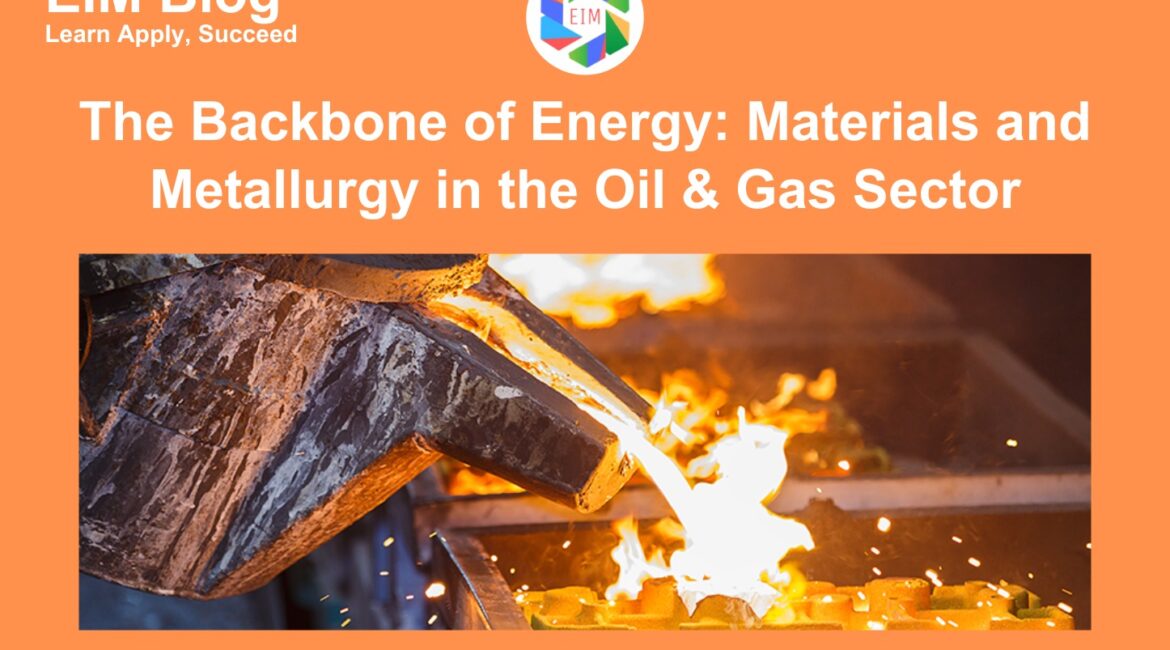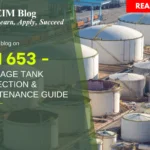Subtotal: $50.00

The Backbone of Energy: Materials and Metallurgy in the Oil & Gas Sector
Introduction
The oil and gas industry operates in some of the most challenging environments on Earth. From deep-sea drilling to high-temperature refinery operations, the reliability and performance of materials used in these settings are paramount. Materials science and metallurgy play a crucial role in ensuring operational efficiency, safety, and sustainability. This blog provides a comprehensive overview of the principles of materials and metallurgy, with a specific focus on their applications in the oil and gas industry.
Defining Materials Science and Metallurgy
Materials Science is the interdisciplinary study of the properties, performance, and structure of materials. It includes metals, ceramics, polymers, and composites.
Metallurgy is a subset of materials science that specifically focuses on metals—their extraction, processing, structure, and performance.
In the context of oil and gas, metallurgy emphasizes selecting and treating metals that can withstand extreme conditions such as high pressure, temperature, and corrosive environments.
Key Challenges in Oil and Gas Environments
- Corrosion: Caused by CO2 (sweet corrosion) or H2S (sour corrosion), leading to material degradation and potential system failure.
- Sulfide Stress Cracking (SSC): A critical issue in sour service where high-strength steels are exposed to hydrogen sulfide.
- High-Temperature Exposure: In refining and processing facilities, materials must withstand oxidation and creep.
- Mechanical Stress: Pipelines and offshore structures experience fatigue due to cyclic loading, requiring materials with high toughness.
Categories of Metallurgy Relevant to Oil and Gas
- Extractive Metallurgy: Processes for extracting metals from ores, crucial for producing raw materials.
- Physical Metallurgy: Focuses on the physical structure and properties of metals through thermal treatments.
- Mechanical Metallurgy: Examines the behavior of metals under mechanical forces.
- Chemical Metallurgy: Concerns the chemical behavior of metals, especially important in corrosion and alloying
Common Materials Used in Oil and Gas Applications
4.1 Carbon and Low-Alloy Steels
- Economical and widely used.
- Suitable for moderate environments.
- Examples: ASTM A106, A333, A335.
4.2 Stainless Steels and CRAs (Corrosion-Resistant Alloys)
- Used in corrosive environments.
- Categories include:
- Austenitic (e.g., 316L)
- Martensitic (e.g., 13Cr)
- Duplex and Super Duplex (e.g., UNS S32750)
- Austenitic (e.g., 316L)
4.3 Nickel-Based Alloys
- Excellent resistance to corrosion and high temperatures.
- Common grades: Inconel 625, Alloy 825.
4.4 Clad and Lined Materials
- Carbon steel bonded with a corrosion-resistant alloy.
- Cost-effective solution for combining strength and corrosion resistance.
4.5 Non-Metallic Materials
- Polymers and composites used for specific components like seals and gaskets.
Metallurgical Processes and Treatments
5.1 Heat Treatment
- Alters the microstructure to enhance properties such as strength, hardness, and toughness.
- Techniques: Annealing, Quenching, Tempering.
5.2 Welding and Joining
- Critical in fabricating pipelines and pressure vessels.
- Requires strict control to prevent defects and ensure integrity.
5.3 Surface Treatment and Coatings
- Methods: Galvanizing, epoxy coatings, thermal spraying.
- Purpose: Prevent corrosion and improve fatigue life.
Corrosion Mechanisms and Control Methods
6.1 Common Corrosion Types
- Uniform Corrosion
- Pitting Corrosion
- Galvanic Corrosion
- Stress Corrosion Cracking (SCC)
6.2 Control Techniques
- Material Selection: Use of CRAs and non-metallics.
- Protective Coatings: Fusion-bonded epoxy, paint systems.
- Cathodic Protection: Impressed current and sacrificial anodes.
- Corrosion Inhibitors: Chemical additives to prevent internal corrosion in pipelines.
Standards and Guidelines
- NACE MR0175/ISO 15156: Specifies materials for use in H2S-containing environments.
- ASME (American Society of Mechanical Engineers): Provides design codes for pressure vessels and piping.
- API (American Petroleum Institute): Standards for materials, welding, and testing in the oil and gas industry.
- DNV, ISO, ASTM: Additional bodies providing global materials specifications.
Failure Analysis and Risk Mitigation
- Techniques: Fractography, metallography, corrosion analysis.
- Objective: Identify root causes of failures to prevent recurrence.
- Common causes: Improper material selection, poor welding, inadequate coatings, stress concentrators.
Emerging Trends in Materials and Metallurgy
- Digital Metallurgy: Use of AI and machine learning for predictive maintenance and material optimization.
- Advanced Alloys: Development of new high-entropy alloys and superalloys.
- Green Metallurgy: Focus on recyclability and low-carbon materials for sustainable energy systems.
Conclusion
Metallurgy and materials science form the backbone of reliable oil and gas infrastructure. From extraction to refining, every segment of the value chain depends on carefully engineered materials and rigorous metallurgical practices. With the increasing complexity of oilfields and the shift toward sustainable energy, the role of advanced materials and informed metallurgy will continue to grow. Understanding these fundamentals is crucial for engineers, designers, and decision-makers driving the future of the energy industry.



 Heat Exchanger Design, Maintenance & Inspection
Heat Exchanger Design, Maintenance & Inspection 


